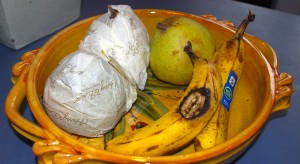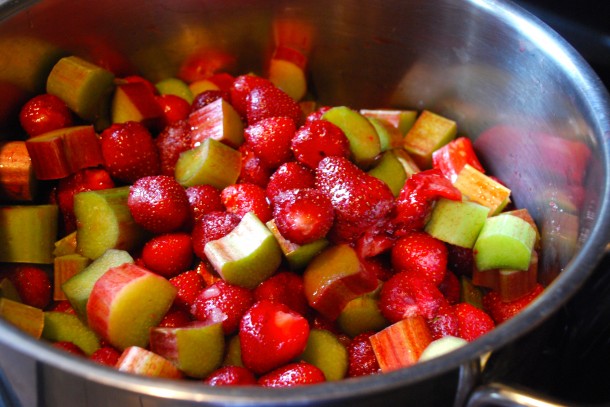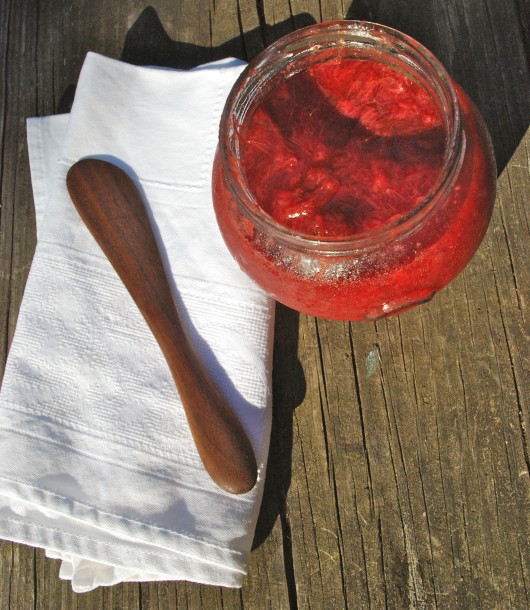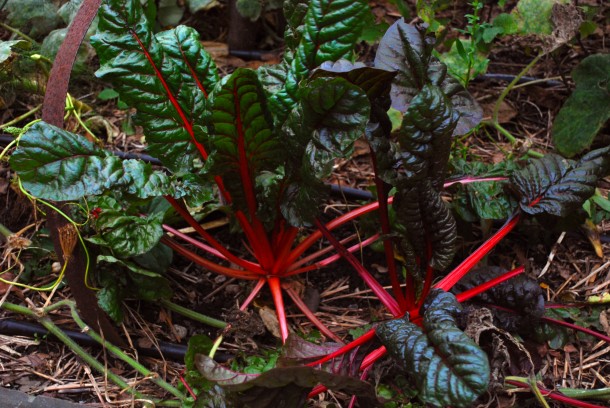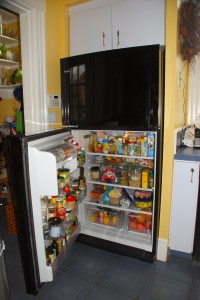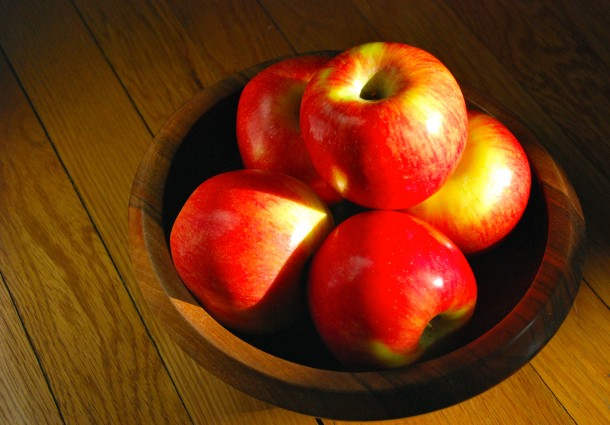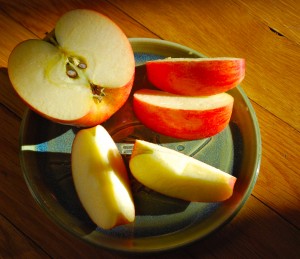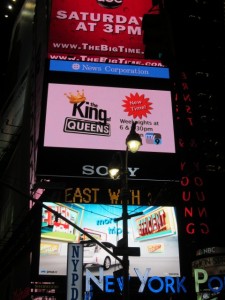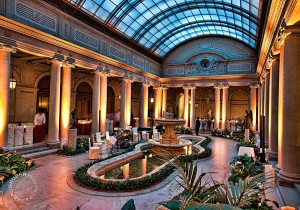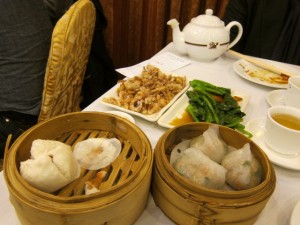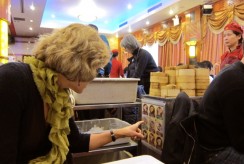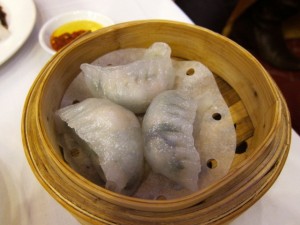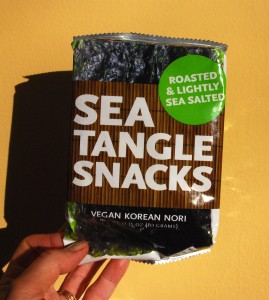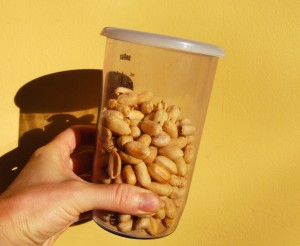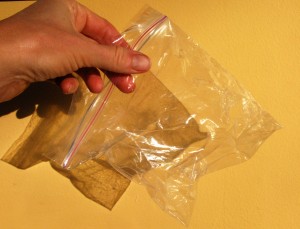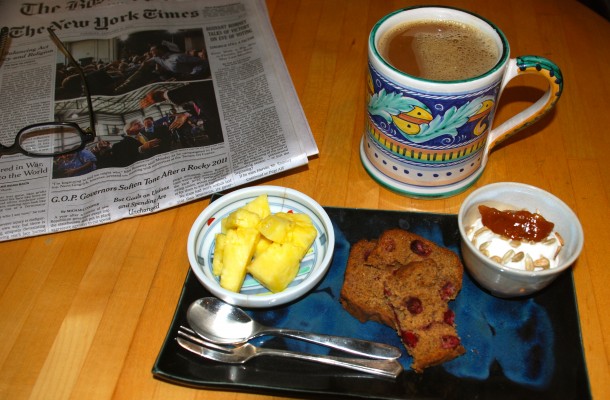Heading to Nantucket? Here’s What’s New!
The Boston Globe, Sunday, June 24, 2012


Nantucket refreshes this season with a renovated theatre and more
By Victoria Abbott Riccardi | GLOBE CORRESPONDENT JUNE 24, 2012
As with any island, Nantucket has witnessed all sorts of changes over the winter. Shops, restaurants, and other businesses have shuttered, while others have sprung up or been refurbished, offering islanders and visitors a roster of fresh places to discover. With the summer season in full swing, here’s what’s new.
Lights, camera, action
After being boarded up for six years, The Dreamland Theater (17 South Water St., 508-228-5356) has reopened to movie lovers and performers after a more than $30 million renovation that includes a 320-seat movie theater, second-floor studio theater, and outdoor community space. Originally built in the 1830s as a Quaker Meetinghouse, the building subsequently became a straw-hat factory, roller-skating rink, and then the center portion of The Nantucket hotel. In 1905, a group of islanders purchased the building and it was floated across the harbor to its present location. Over the years it showed moving pictures (silent and then talkies), vaudeville shows, and then movies, with the upstairs portion serving as a dancehall. In 2004 financial troubles caused the theater to close. It languished until 2007 when the Nantucket Dreamland Foundation formed to save it.
“In the rebirth of this theater we’ve taken something that was a summer-only theater and remade it, using some of its own historic fabric, into a state-of-the-art facility that will serve the island year round and digitally connect us with programming far beyond our shores,” says Wendy Schmidt, president of the foundation’s board.
Eat up
Sea Dog Brew Pub & Restaurant, Nantucket.
The island has new spots where you can sip, sup, and chill out, beginning with Cru (1 Straight Wharf, 508-228-9278), a waterfront eatery where seafood reigns supreme for lunch, dinner, and weekend brunch. In addition to over a dozen varieties of oysters, the menu highlights local catches. Two bars offer an extensive roster of champagnes, wines, and cocktails.
Toward the center of town lies MET on Main, (38 Main St., 508-325-5111), the fifth establishment in the Boston-based Metropolitan Club restaurant group. Serving breakfast, lunch, and dinner with Asian, Mexican, and Polynesian accents, it has such creative offerings as a pancake bar, raw bar, and tartar bar.
More globally inspired fare abounds at Fog Island Grille (5 Amelia Drive, 508-228-1879), a sister restaurant to the in-town Fog Island Cafe. Open for dinner only, Fog Island Grille serves items like Mexican-style tortilla soup, burgers, and mains.
For Asian food, the Thai House (118 Old South Road, 508-680-1522) satisfies yens for curries and pad Thai, while offering sushi and Chinese favorites such as General Tao’s chicken.
Nantucket Pasty Company (17 North Beach St., 508-680-4143) brings flaky, hot, hand pies to islanders with such fillings as Sconset Steak Stilton, while The Pit Stop (12 Nobadeer Farm Road, 508-228-6661) dishes out casual barbecue and other foods to go such as pulled pork, ribs, and Southern fried chicken with “all the fixins.”
At Sea Dog Nantucket (15 South Water St., 508-228-8011), the fourth incarnation of the original Maine brew pub, craft beers from the Maine brewery flow, along with those from Nantucket’s Cisco Brewers. The pub also serve cocktails and casual grub.
Shop till you drop
“There are tons of new women’s shops, as well as expansions and changes to existing shops,” says PJ Martin Smith, executive director, Nantucket Chamber of Commerce. “J. McLaughlin (1 Salem St., 508-325-6351) is now offering men’s clothing as well as women’s and Thomas Macy Warehouse (12 Straight Wharf) now houses Nantucket Natural Oils on the second floor (800-223-8660) and European Traditions Antiques on the bottom floor (508-325-8976), offering art, clothing, and antiques.”
Monelle (Zero Candle Street, located inside the 1 Main Street building, 508-901-5561) has hip women’s wear, while Dakota (23 Old South Wharf, 508-901-5332) sports splashy frocks, along with jewelry, cufflinks, and more.
Shake your booty
With biking, walking, sailing, tennis, golf, and surfing, Nantucket offers a bevy of outdoor activities. New this year is disc golf. Open to the public and free of charge, the nonprofit, eight-hole Nantucket Disc Golf in the Nantucket State Forest South Pasture off Old South Road calls for using a plastic disc — instead of golf club and balls — to sink in large baskets, instead of small grass holes. While you bring your own disc, game instructions and rules, maps of the course, and directions are available at www.nantucketdiscgolf.org.
From July 26-28 the island will host the first annual Nantucket Yoga Festival at Bartlett’s Ocean View Farm (33 Bartlett Farm Road, 508-228-9403). Throughout the day on Friday and Saturday paying participants will be able to attend various classes, workshops, and lectures taught by over a dozen internationally acclaimed teachers. The festival will include a vendor village open to the public featuring artisans, jewelry makers, and clothing designers. For more information go to www.nantucketyogafestival.com.
Victoria Abbott Riccardi can be reached at variccardi@rcn.com.
Strawberry Fields For Jam
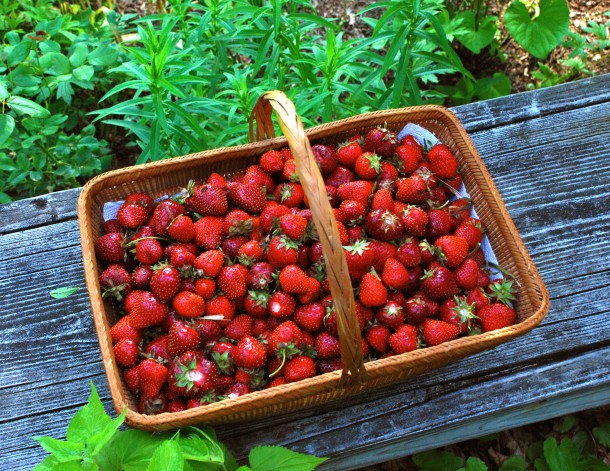
It’s strawberry season in New England, so the other weekend I picked 40 pounds of ripe berries and turned most of them into strawberry-rhubarb jam. I used less sugar than traditional recipes because I find most jam recipes are cloyingly sweet and too sticky. Because I didn’t want to bother with preserving the jam, I simply spooned it into glass jars and froze it. You really can freeze glass and the frozen jam will last for several months (if not longer) in the freezer. Make sure to save at least one jar to enjoy right away and store it in the refrigerator.
Delicious Strawberry-Rhubarb Jam (for the freezer)
I didn’t use a recipe, but here is approximately how I made it.
18 cups hulled ripe strawberries, rinsed
5 long, fat stalks rhubarb, each rinsed and cut into 1-inch chunks (about 6 cups)
2 cups granulated white sugar, plus more if needed
1. Combine the strawberries, rhubarb, and sugar in a large, heavy-bottom soup pot over medium heat. When the berries start to release their juices and you can see the syrup bubbling, reduce the heat to medium-low. Simmer the mixture, uncovered, until it has become jammy, about 3 hours, stirring mixture occasionally. Taste the jam for sweetness and add more sugar, if desired. If you’ve added more sugar, cook the jam for 10 minutes more to make sure the sugar has dissolved into the jam.
2. Let the jam cool slightly. Lay out 6 to 8 clean glass jars with screw tops–I used a variety of jars I’d saved from store-bought fruit butters, nut butters, and jams (the number of jars will vary depending upon how big they are)–and spoon the warm jam into the jars, leaving a little head room (the area between the jam and the jar’s top rim), about 1/8-inch. Let the jam cool completely. When cool, screw the tops on the jars, label the jam (include the date), and place it in freezer.
My favorite way to enjoy this jam is spooned over ricotta cheese on grainy toast. It’s also very good swirled into goat’s milk yogurt and would make a tasty accompaniment to seared foie gras and grilled pork tenderloin.
My Latest Scoop in VIV Magazine!
Here is a piece I just wrote for VIV Magazine’s blog…
Taste Test: How Do Non-Dairy Ice Cream Alternatives Stack Up?
No matter the season, I’m in the mood for ice cream, even when winter storms blast into town. But because of ice cream’s fat content, I often opt for nonfat frozen yogurt.
Lately I’ve become curious about all those non-dairy offerings made with various nut, bean and grain milks — ideal for vegans or people who cannot eat dairy. So I conducted a solo sampling, choosing vanilla whenever possible for a fair comparison.
Below are the results of the taste test with the brands listed in alphabetical order.
Almond Dream, Vanilla
I love almonds, so I fell hard for this creamy, almond-milk-based treat flecked with real almond meal and tasting more of sweet almonds than vanilla. It has a soft, smooth consistency and delicate sweetness from evaporated cane juice. I like it topped with fresh raspberries, warm chocolate sauce and toasted almonds.
Per ½ cup serving: 140 calories; 7 g fat (1 g saturated fat); 0 mg cholesterol; 12 g sugar; 1 g protein
Ciao Bella Coconut Sorbet
This delectable sorbet is creamy, densely textured and deeply satisfying. It has a strong coconut flavor, which I love, but isn’t for everyone. Made with coconut cream, it has a pleasing richness — but also a big dose of saturated fat. Evaporated cane juice and tapioca syrup lend it a soft sweetness. I love to pair it with Ciao Bella’s nonfat passion fruit sorbet for a tangy-sweet, creamy-rich contrast.
Per ½ cup serving: 190 calories; 10 g fat (9 g saturated fat); 0 mg cholesterol; 21 g sugar; 1 g protein
It’s Soy Delicious, Vanilla
Of all the frozen desserts I tasted, this one mimics vanilla ice cream the best, yet was the leanest. Made with organic soymilk, it has a nice fluffy consistency — it makes ice cream’s signature surface cracks when scooped — and a clean, vanilla-bean flavor. I like that it’s sweetened with fruit (pineapple and apple syrups and pear and peach concentrates), along with tapioca syrup and/or brown rice syrup, chicory root extract and tapioca sugar. It’s ideal for accompanying summer fruit crisps, crumbles, and cobblers.
Per ½ cup serving: 130 calories; 1.5 g fat (0 g saturated fat); 0 mg cholesterol; 9 g sugar; 2 g protein
Rice Dream, Vanilla
That I still have almost a full pint of this guy in the freezer bespeaks my reaction — not enthusiastic. The texture is pretty dense and the concoction doesn’t melt easily. Kudos to the company for sweetening it with organic agave and brown-rice syrups, but I found the taste to be oily, with a flavor reminiscent of overcooked milk.
Per ½ cup serving: 160 calories; 6 g fat (0.5 g saturated fat); 0 mg cholesterol; 14 g sugar; 0 g protein
Do you have a favorite non-dairy frozen dessert or recipe?
Love Letter To Boston Restaurants
This past Friday ( June 1, 2012), my story on Boston’s restaurant boom ran in The Dallas Morning News. I noticed that JetBlue was offering direct service from Dallas to Boston this spring, so pitched the travel editor the idea. Here’s the article, which is a great resource if you’re headed to Beantown. Of note, I took all the photos!
Boston’s great restaurants are booming
By VICTORIA ABBOTT RICCARDI
Special Contributor
Published: 01 June 2012 03:26 PM
It’s just another weeknight at Island Creek Oyster Bar in Boston and the room buzzes with the sound of clinking ice, laughter and the pop of corks. The waitress takes our order and soon cocktails arrive followed by oysters, briny and sweet on the half shell and fried golden in sliders moistened with lime-chile aioli. Seared bass comes next, along with batter-crisp fish and chips, skate with brown butter and a lobster roll with kettle chips and slaw. As always, the place is packed to the gills and everyone’s smiling.
Across the Charles River in Cambridge a similar scenario plays out at a bevy of new eateries, where the nightly specials are craft cocktails, upscale comfort food and fun atmosphere.
The greater Boston area has always had terrific restaurants, but a recent explosion of new ones has raised the bar. Whether the focus is steak, seafood or gourmet flatbread, these restaurants have one thing in common: menus that showcase New England’s bounty of superb fish and seafood, farm-grown produce, heritage meats and award-winning cheeses.
Here is a sampling of some of the city’s tastiest new offerings.
Legal Harborside, 270 Northern Ave., Liberty Wharf, Boston, 617-477-2900
Anchored in one of Boston’s fastest growing neighborhoods — the Seaport District, home to myriad new hotels and the Institute of Contemporary Art — this three-level seafood emporium marks the latest addition to the famous Legal Seafood restaurant group, a self-described fish company that happens to be in the restaurant business. The bustling first floor houses a fish market, oyster bar and casual eatery with outdoor seating overlooking the water, where diners tuck into favorites like creamy clam chowder and lobster rolls.
Finer dining is on the second level, where you’ll find white tablecloths, a grander wine list and dressier menu options, such as shrimp cocktail served in an ice globe and local cod with sorrel sauce and foraged mushrooms. The third floor houses a window-filled rooftop bar, where you can savor shaken cocktails, bar snacks and sushi, along with breathtaking views. It’s open for lunch and dinner on the first floor; dinner only on the second floor; drink and bar snacks are on the third floor.
Menton, 354 Congress St., Boston, 617-737-0099
Having just received a Relais & Châteaux designation as one of the most beautiful restaurants in the world, this luxurious French-Italian influenced restaurant in the artsy Fort Point neighborhood fits the bill when you’re looking to splurge. The crown jewel of chef-owner Barbara Lynch’s extensive restaurant group, its soothing gray, white and black-toned dining room offers two prix fixe menu options: a four-course tasting or the multicourse chef’s tasting with optional wine pairings.
Seasonally inspired and creative without being outlandish, you’ll find such dishes as rosettes of cured arctic char in cabbage jus with rye crisps and crème fraîche; duck foie gras and Muscat grape gelée terrine with almond brioche; and Angus beef rib-eye with ramps, Yukon gold potatoes and black trumpet mushrooms. Dinners begin with a selection of canapés and conclude with a medley of tiny sweets and sighs of satisfaction. It’s open for dinner only.
Trade, 540 Atlantic Ave., Boston, 617-451-1234
With its soaring ceilings, edgy vibe and boisterous bar, this waterfront eatery attracts a young and restless crowd eager to sip, sup and catch up over small plates, soups, salads and gourmet flatbreads. Co-owners chef Jody Adams (of Cambridge’s Rialto fame), Eric Papachristos, and Sean Griffing dreamed up the global menu inspired by their travels. Ergo, you’ll find such tasty options as crispy shrimp with piripiri; striped bass ceviche with yuzu, fava beans and cucumber; and salt cod flatbread with tomatoes, olives and preserved lemon.
While it’s easy to fill up on the shared plates and sides, carnivores will swoon over the signature beef burger topped with pancetta, Vermont cheddar and grilled onion. Seafood lovers won’t want to miss the succulent, South Asian whole grilled lobster topped with a feathery mix of pea shoots, mint, asparagus and peas. It’s open for lunch and dinner.
Island Creek Oyster Bar, 500 Commonwealth Ave., Boston, 617-532-5300
Barely a cherrystone’s throw from Fenway Park — home of Major League Baseball’s Red Sox — this red-hot seafood spot has some of the best oysters in town. That’s because one of the restaurant’s partners is Skip Bennett, owner of Island Creek Oysters farm in Duxbury, Mass. (which even supplies the White House). You’ll find homey offerings (fried-clam plates, baked beans and biscuits) as well as more sophisticated fare, including seared local sea scallops over spring parsnip purée with peas and tarragon vinaigrette (there is steak and chicken, too).
Fun cocktails abound, as well as interesting beers and a thoughtful selection of wines by the glass and bottle. To be part of the action, request a high-top table up front.
For a quieter experience, reserve a table in the back, not far from the gray back wall that upon closer inspection turns out to be made entirely of stacked oyster shells. It’s open for lunch, dinner and Sunday brunch.
Catalyst Restaurant, 300 Technology Square, Cambridge, 617-576-3000
The neighboring Massachusetts Institute of Technology inspired the name of this sleek, modern American eatery softened with natural elements like reclaimed barn wood, live grasses and a glowing fire in the lounge area.
The food can best be described as bistro fare with a New England twist, which means seared scallops with turnips and pine nut butter; hanger steak with torpedo onions and red wine sauce; or spit-roasted chicken, cut in half, and served with spuds drenched in chicken drippings.
While desserts change seasonally, don’t leave without trying the outrageous butterscotch and passion fruit pudding — a sweet, tart, creamy concoction served with pound cake croutons and cold whipped cream. It’s open for lunch, dinner and Sunday brunch.
Area Four, 500 Technology Square, Cambridge, 617-758-4444
Chef and co-owner Michael Leviton has turned his passion for creating scrumptious dishes brimming with local, sustainable ingredients into an art form — first at the elegant Lumiére in Newton and now at this airy, low-key spot in the heart of Kendall Square, home to Genzyme, Google, Microsoft and soon Amazon. In the morning, a bakery and coffee bar draws customers into the space, which, shortly before noon, opens into the casual New England eatery and bar. Two wood-fire ovens crisp the dozen or so pizzas on the menu (try the white one with local clams, bacon, hot pepper, parsley and pecorino).
The ovens roast the seafood, veggies and meats in the small-skillet creations, such as fire-licked fava beans in the edible pods with Maine sea salt and Aleppo pepper; roast chicken and artichokes over herb-dressed arugula with focaccia croutons; and roasted Chatham-hooked cod with Wellfleet littleneck clams, peas, spring onions and pea shoots.
A huge chalkboard along the back wall highlights the day’s offerings, along with seasonal cocktails, craft beers and wines. For dessert, it’s hard to resist the homemade soft-serve flavor of the day jazzed up with add-ons like soft maple candies, chocolate chips and salty bacon bits. It’s open for breakfast (coffee bar), lunch, dinner and Sunday brunch.
Victoria Abbott Riccardi is a freelance writer in Newton, Mass.
When you go
Legal Harborside: legalseafoods.com/restaurants/boston-legal-harborside
Menton: mentonboston.com
Trade: trade-boston.com
Island Creek Oyster Bar: islandcreekoysterbar.com
Catalyst Restaurant: catalystrestaurant.com
Area Four: areafour.com
LOBSTER ROLL (adapted from Legal Harborside)
1 hot dog bun
Soft butter for spreading, about 2 tablespoons
1/2 cup cooked, chopped lobster meat
2 tablespoons finely diced celery
1 tablespoon high-quality mayonnaise
Fresh lemon juice, about 1 tablespoon
Salt and freshly ground black pepper
Spread outside of hot dog bun with butter and toast until golden. (Place buttered hot dog bun in a toaster oven and brown on both sides.) Combine lobster meat, celery, and mayonnaise in a small bowl. Stir to blend. Add lemon juice to taste, about 1 tablespoon, and season with salt and pepper. Spoon lobster salad into toasted bun and enjoy. Serves 1
New Travel Article!
My article on Blue Hill at Stone Barns restaurant ran in yesterday’s travel section of The Boston Globe.

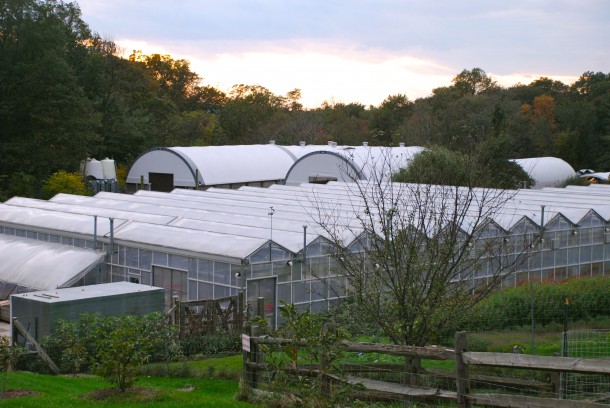 THE ARTICLE: http://www.bostonglobe.com/lifestyle/travel/2012/05/12/blue-hill-stone-barns-restaurant-pocantico-hills-inventive-dishes-keep-coming/UDbIMwjS1jXoxjImfqQT3H/story.html
THE ARTICLE: http://www.bostonglobe.com/lifestyle/travel/2012/05/12/blue-hill-stone-barns-restaurant-pocantico-hills-inventive-dishes-keep-coming/UDbIMwjS1jXoxjImfqQT3H/story.html
Stone Barns Center for Food and Agriculture is an extraordinary nonprofit organization that aims to help children and adults understand the value of eating healthy, sustainable food and learn how to grow it in an organic and sustainable way.
The restaurant brings this mission alive by offering multi-course meals made with local, organic ingredients.
Imagine if schools, hospitals, and businesses across America believed in this same concept, thus enabling children, the sick and healing, and working folks to enjoy a natural, healthy diet that comes from yet safeguards the earth.
New Fridge
It started with the icemaker, which after 9 years decided to stop producing cubes. So much for John’s “extra-cold” martinis.
That was one month ago. I went on-line to see what the problem might be and based on reading numerous discussions, concluded that a plug of ice was blocking the water line. “Hello, Mr. Plumber, could you come check out the water line?” The plumber came and the line was fine. Still no ice.
About two weeks ago the freezer began making funny noises–a fast whizzing sound, followed by a few seconds of silence. More whizzing, more silence. The next morning, the milk in the fridge had turned sour. The freezer was warm. I had to go to Utah for 4 days. When I returned, I called a repair person, who replaced the start switch. Still no ice. The refrigerator was humming away, but not cold.
Clearly, it was time to buy a new fridge. But what kind to buy? The Whirlpool model we bought 9 years ago was a top pick for value and quality on Consumer Reports. Admittedly, we’d never had a problem with it, until it conked out. Since I wasn’t ready to buy fancy foodie fridge, I went on-line and looked at mid-level models with a top freezer. I needed it in a certain size. I wanted it immediately and in black to match our dishwasher and stove.
Yesterday, I drove to my local Lowes store. Mark was on duty and showed me the various models. When he told me he was a part-time fire fighter in my town, I felt we’d reached a new level of understanding. “Okay, Mark,” I said lowering my voice, “what’s the best fridge? Honesty.” Mark brought me over to a line of refrigerators and pointed to several that fit my criteria–Whirlpool, Maytag, and Frigidaire–all the right size, with a top freezer, and black.
“They’re pretty much the same,” he said, gesturing to the line. I told him about the second fridge in our cellar that came with the house when we purchased it over 15 years ago and still worked like a dream. 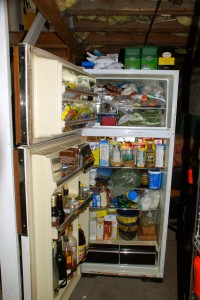
“Yup, I know,” he said, shaking his head. “They just don’t make ’em like they used to. Nowadays, they break all the time.” Great, I thought. Gotta love the American economy. Build things cheap so they’ll break.
This afternoon my new black Whirlpool fridge will arrive. I’ve emptied out the contents of the old fridge–seems my husband, John, and I live on condiments–and look forward to filling the new one. 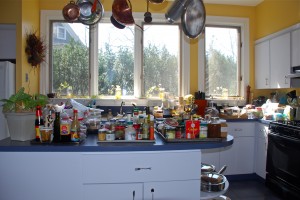
Mark told me the icemaker would be free. I also could get a $50 rebate from Energy Star. I thanked him for everything. “See yah later,” he said smiling. “Let’s hope not in Newton!” I said with a nervous laugh.
Well, that was last week. Friday afternoon the delivery truck broke down. The delivery was delayed. At 6:30pm on Friday I cancelled the delivery because I had a dinner to attend. Back into the old, warm fridge went all my condiments. I put the milk, yogurt, and eggs in the basement fridge and the fruit and veggies in a box outside, since it’s been in the low 40’s recently. This morning–Monday–the new fridge arrived. Yay! “But we don’t install the icemaker,” said the delivery man. “It’s not in our contract.” Oh, no. I called my friend, Mark, at Lowes.
“I don’t know what to do,” I said. “Can you help?” Mark told me they don’t install icemakers. Had I known that, I would have bought a fridge with the icemaker already installed. “Please, could you send someone?” Mark, paused, and then agreed. A few minutes later Mark’s supervisor called the delivery man. Suddenly, the delivery man was attaching the icemaker!
“For you,” he said. “I’m doing this for you and my boss (at Lowes). He’s a good guy.” Four hours later, I have a new fridge. It’s smaller than my old one–despite being the same model–and the holding bins are more flimsy. However, just a few minutes ago I just heard a sweet sound–the kerplunk of an ice cube dropping into the holding bin. Tonight, I just might have to celebrate with a martini.
Gift of Apples
One of the unexpected pleasures of writing about food is the occasional goodie that arrives in the mail. Last week the kind and talented folks at Rainier Fruit Company in Selah, Washington–founded in 1888 and one of the largest apple, pear, blueberry, and cherry growers in the country–sent me a box of Lady Alice apples. Oh, my. Hard, crisp, and juicy with a winey, tart-sweet flavor, these apples have become a new favorite. They’re beautiful too–pinkish red with a soft yellow blush.
Although Lady Alice apples were discovered in 1978 by an apple grower in Gleed, Washington, Rainier introduced them only three years ago. They spent decades working to propagate the seedlings best characteristics and then named them after the company founder’s mother, Alice.
What’s special about these apples, aside from their rich flavor, is their availability. Supermarkets nationwide sell them from February through April, which means you can enjoy a snappy, fresh apple during a time when most other apples have become soft and mealy. That’s because most supermarket apples are harvested in the fall and then held in cold storage throughout the rest of the year.
While these apples can be cooked, I think they’re best enjoyed fresh. You can smear them with roasted almond butter, add them to plain goat’s milk yogurt sweetened with pure maple syrup, or toss them with slivered endive, crumbled aged goat cheese, toasted pistachio nuts, and a balsamic vinaigrette for an early spring salad. Then, again, you can savor them plain and simple–just cut into wedges, as I did this morning.
Big Apple
Nothing like a trip to Manhattan to nourish one’s passion for art, culture, and great food.
John and I took the fast train to New York City, whereupon I kicked off the morning with coffee and conversation with my wonderful VIV magazine editor. Next came lunch with friends at A Voce Columbus, a fresh, light Italian restaurant in the Time Warner Center. A walk through Central Park brought us to The Frick Collection, where we saw the Renoir exhibit (small, but delightful). I had forgotten how beautiful the Frick is what with that tranquil, white marble pool area lined with flowers and plants and the various rooms filled with exquisite decorative arts. (Photos are off The Frick Collection’s website.)
That night we supped at Felice Wine Bar (65th and 1st), a candlelit nook, where we ordered excellent wines by the glass and small plates, like shaved raw artichoke and arugula salad; oily Brussels sprouts with bacon; and various crostini topped with sauteed mushrooms, burrata, prosciutto and other goodies. It was homey Italian comfort food at its best.
Saturday brought warmth, sunshine, and excellent morning coffee at Joe the Art of Coffee, which I’d read about in a New York Times piece about the best new coffee spots in the city. The basic drip was earthy, rich, and deeply satisfying. We went to the one in Grand Central Station, which has been renovated since I last saw it and has an impressive food hall, enticing restaurant stalls, and several cute shops. From there, we strolled up to the MET to see the American Wing–wow! So many treasures, so well organized, so informative. More walking and then a so-so dinner at Dovetail on the west side. Not only were we given the least attractive table in the house (cramped and next to the kitchen), but it wasn’t even ready when we arrived. The food was good, not great, and extremely pricey. Suffice it to say, I won’t recommend Dovetail or go back.
But I will return to Chinatown, a bustling part of the Big Apple that’s fragrant with incense and grilling meat and ripe with the anticipation of a great meal. It reminds me of Hong Kong, one of my top three favorite cities in the world (along with Paris and Kyoto).
After a long wait, we finally got a table for two at the Golden Unicorn Restaurant, where we ordered a flurry of dishes from the rolling carts: steamed buns filled with BBQ pork; sauteed Chinese broccoli; bean curd rolls; shrimp shumai; fried calamari and cashews; crescent rice flour dumplings filled with watercress, round rice flour dumplings stuffed with veggies, pork and peanuts, and round rice flour dumplings crisped in oil and filled with veggies and shrimp. Yum! It was the perfect prelude to an afternoon performance of War Horse, which won five Tony awards. And, for good reason. It’s a moving story and the choreography was superb.
We left the theater and walked down 9th Avenue to 43rd for dinner at Esca, the seafood-centric restaurant owned by Mario Batali, Joseph Bastianich, and Dave Pasternack. Done up in tones of cream and dark wood, it has an elegant, yet casual feel. Over a bottle of crisp white wine, we shared grilled octopus over white beans (smoky and robust), creamy sea urchin spaghetti (unctuous), tuna belly “bacon” with a farm egg (too salty), grilled bass, and a chocolate-hazelnut ricotta cannoli (heavy, but good).
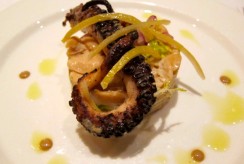
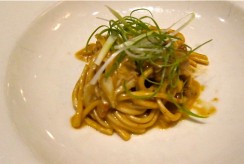
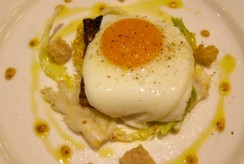
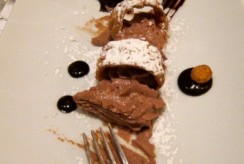 Sweet dreams and then the train ride up to Boston the next day, during which we reflected on the fullness of our weekend.
Sweet dreams and then the train ride up to Boston the next day, during which we reflected on the fullness of our weekend.
Dinner Dilemna
Dinner has always been my favorite meal of the day. It represents a closing of the loop–a time to leave the frenetic outside world and come home, change into something soft and comfortable, create a wholesome meal, and enjoy it with those you love, even if it’s yourself.
So an evening art course has thrown me for a loop. For the past several years I have been taking classes in printmaking, which I adore, as I do photography. Thus, when the Museum of Fine Arts School in Boston offered a class called Photo and Digital Applications in Printmaking, I had to take it.
It’s been fabulous and I am learning so much. The teeny, weeny problem is what to have for dinner. The class begins at 6:30pm, but everyone arrives around 5pm in order to use the various photo and printmaking machines, which are limited. There isn’t any time for a break and eating when I get home around 10:30pm seems a tad unhealthy.
Ergo, the small culinary conundrum. Big breakfast, late lunch? Normal breakfast, tiny lunch, early dinner?
Thus far, my strategy is to bring some snacks–something veggie related, like these crispy seaweed sheets, which taste like potato chips!
I also bring Japanese rice crackers, like this big one studded with black sesame seeds.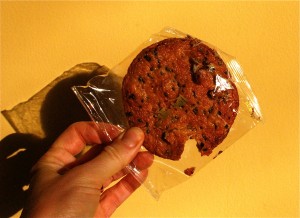
A piece of fruit, like an orange, is a nice option, as are plain, unsalted roasted peanuts for protein.
Look at the hole in the plastic bag! See that the bag is empty.
Note the mouse droppings (the tiny black rice-shaped things) in the blue bag.
When I came home last night I left my art bag on a chair in the kitchen holding my unfinished bag of peanuts. Guess who ate them in the dark of night? Not me. Not John. Hmm….
Birthday Breakfast
What does a food and travel writer eat for a birthday breakfast? It depends upon the person, of course, as well as the day’s flow. I wanted something that would feel special, but light, since I was having dinner at my absolute favorite Boston restaurant–Mistral. I adore their crisp-skinned duck and order it every time I go.
In putting together this morning meal I was reminded of how lovely it is to place your food on nice dishes. You also want to arrange it artfully–not just plop it down in a big, fat heap. I learned all this in Japan, where I came to appreciate that every bowl, plate, or platter has a story, based on how you acquire it. Using certain dishes evokes specific memories and taking the time to arrange your food in a delicate way creates a more thoughtful and pleasing moment at the table.
So, here is what I made. I began, as I always do, with a large mug of coffee. I usually use an equal mix of Starbucks decaf Sumatra and Gold Coast blend (both dark roasts), ground at six, and dripped through a paper filter. Having just returned from Costa Rica, where I drank some excellent organic coffee, I’m on the hunt for a syrupy, robust organic bean and new brand. The mug comes from a pottery store in Deruta, which I visited this summer.
The rectangular ceramic plate holding the various tidbits was a gift my husband gave me several years ago for Christmas. It looks Japanese and he knew I’d adore it. I do! On the left of the plate sits a tiny dish I bought in Japan. I usually use it to hold soy sauce, but felt it would be perfect holding a few chunks of pineapple (from Costa Rica, no less). If you look closely, you’ll see a crack at the top of the dish. I broke the saucer several years ago, but glued it together because I love it so much. The Japanese believe a mended item is actually more precious than the original because it shows scars of survival. I love that. The middle of the plate holds a piece of homemade whole-wheat cranberry bread that I toasted, cut into thirds and stacked. On the right rests a Chinese teacup filled with goat’s milk yogurt, some toasted sunflower seeds, and a dollop of spiced pumpkin butter from Trader Joe’s.
The tiny fork that I used to eat the pineapple was a gift from my husband. It’s an antique cake fork he bought at Portobello Market a few years ago on a business trip to London. The small spoon–I am embarrassed to say–made its way into my purse on my first flight to Japan in 1986. It was small, rounded, and begged me to take it home. Nowadays, I know better and would politely ignore its plea.
It was a perfect little breakfast–tasty, satisfying, and poetic. Oh, and as you can see, Abner chose a banana. 